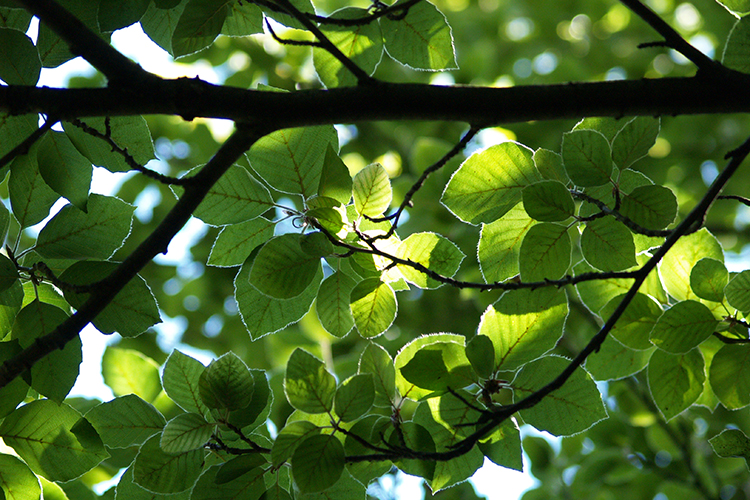
European Beech
Fagus sylvatica
Family and description
From the same family as the oaks and chestnuts – the Fagaceae family – the beech is a deciduous tree that can reach a height of 40 m.
The trunk is long and straight, with a gray and smooth bark. The crown is conical, broad and with a large quantity of branches in adult trees.
The leaves are simple, oval of acute apex, with wavy margin and short petiole. The young leaves are hairy on the margin and the older ones have a smooth or slightly toothed margin.
In the autumn its colour is a deep yellow and brown.
The masculine flowers hang from the branches in small catkins, the feminine ones lie erect and produce the beechnuts. Beechnuts are small nuts of triangular section, brown and shiny, surrounded by a spiny dome that releases them when ripe.
Origin and habitat
It occurs naturally throughout Europe, especially in the North and Centre. This species adapts well to the temperate climate of northern Portugal. When cultivated it generally presents abundant natural regeneration. It can inhabit areas of thin, light, well-drained and slightly alkaline soils, with water available and a cool climate. During the early years beeches are very sensitive to late frost.
Uses and curiosities
Whilst beechwood is not considered a noble wood like that of the oaks, it is also appreciated for carpentry works for its fine and homogeneous texture and very light colour.
Young leaves can be used in salad dressings and the seeds can be eaten raw or cooked. As the seeds are very high in fat, they are much appreciated by many animals that bury them in order to have food reserves for the winter, which causes the seeds to disperse.